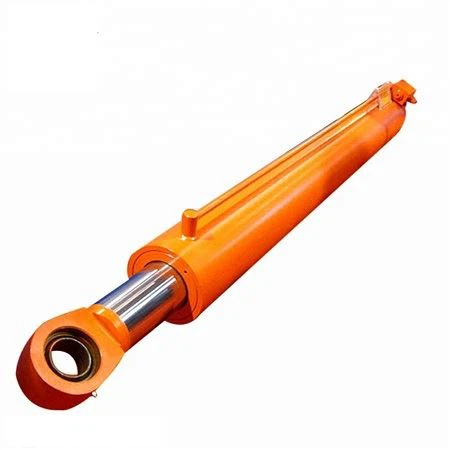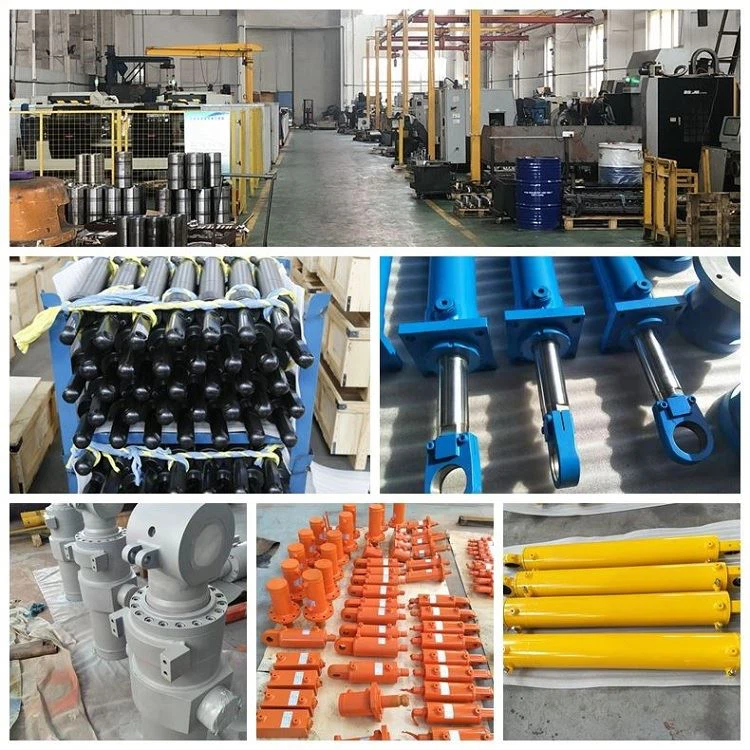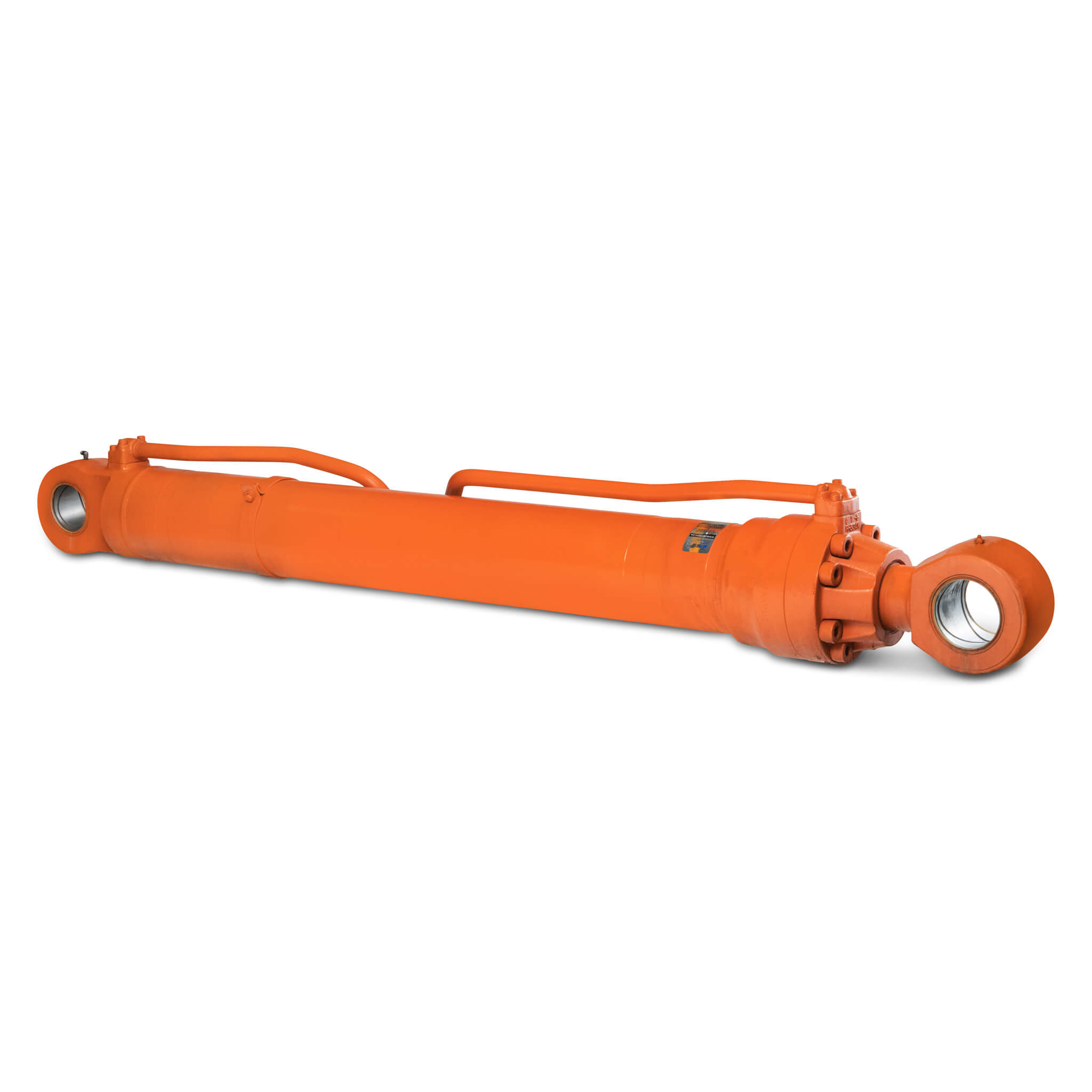Product Description
| Name | Hydraulic drawbench cylinder |
| Bore diameter | 800mm |
| Rod diameter | 400mm |
| Stroke | 10800mm |
| Working pressure | 27MPa |
| Piston rod material | CK45 |
| Bore material | CK45 |
| Numbers(MOQ) | 1 pcs |
| Package | Packing strap |
| Application | Hydraulic drawbench |
Lian Hydraulic was formed in HangZhou of China with the mission of supplying the world class hydraulic cylinders and hydraulic systems to the various industrial sectors .
Since that date our company has successfully completed numerous installations throughout the Chinese mainland and abroad.
Our factory floor space exceeds 38,000 Sqr. CHINAMFG and our 20 cranes provide us with the capability to handle and machine cylinders and components weighing up to 150,000kgs.
From conception to installation our engineers, factory staff and salesmen strive to ensure that our customers receive the very best in quality products and service.
Our manufacturing facility is capable of producing hydraulic cylinders up to the following dimensions:
Bore Diameter – 2,500 mm
Rod Diameter – 1,500 mm
Stroke – 20,000 mm
The Typical Applications:
Machine Manufacturing
Casting Cylinders
Mobile Hydraulics
Press Manufacturing
Hydroelectric Industry
Offshore Industry
Mining Industry
Hydraulic Systems
Lian Hydraulic source raw materials exclusively from the most reputable and quality approved suppliers in China such as ( HangZhou Pangang, ZheJiang Valin Steel, ZheJiang Baosteel etc.)
We at Lian Hydraulic invite all customers to consider our facility for your next hydraulic project.
| Certification: | ISO9001 |
|---|---|
| Pressure: | Medium Pressure |
| Work Temperature: | Normal Temperature |
| Acting Way: | Single Acting |
| Working Method: | Straight Trip |
| Adjusted Form: | Regulated Type |
| Customization: |
Available
|
|
|---|

Can boom cylinders be used in construction equipment like cranes and excavators?
Yes, boom cylinders can be used in construction equipment such as cranes and excavators. Here’s a detailed explanation:
Boom cylinders play a vital role in the operation of construction equipment, including cranes and excavators. Here’s how boom cylinders are utilized in each of these applications:
- Cranes: Boom cylinders are an essential component of crane systems. They enable the extension, retraction, and elevation of the crane’s boom, allowing for lifting and lowering of heavy loads. Boom cylinders provide the necessary hydraulic force to articulate the boom sections and control the movement of the crane’s lifting arm. This capability allows cranes to reach various heights and positions, making them versatile and indispensable in construction projects that require lifting and positioning of materials, equipment, or structural components.
- Excavators: Boom cylinders are integral to the functionality of excavators. In excavators, boom cylinders control the movement of the boom, which is responsible for the vertical lifting and lowering of the excavator’s arm. The arm, in turn, enables the excavation, digging, and material handling operations. By extending and retracting the boom cylinder, operators can precisely control the depth and reach of the excavator’s bucket or attachment. Boom cylinders provide the necessary force for lifting heavy materials and allow for efficient digging and trenching in construction and earthmoving applications.
The use of boom cylinders in construction equipment like cranes and excavators offers several advantages. These include:
- Powerful Lifting Capacity: Boom cylinders provide the hydraulic force required to lift heavy loads, enabling cranes and excavators to handle substantial weights with ease and precision.
- Precise Control: Boom cylinders allow for precise control over the movement of the crane or excavator’s boom, ensuring accurate positioning and efficient operation.
- Adaptability: Boom cylinders can be customized to match the specific requirements of different crane and excavator models, allowing for versatility and compatibility across various construction applications.
- Durability: Boom cylinders are designed to withstand the rigorous demands of construction environments. They are constructed using robust materials and undergo thorough testing to ensure durability and longevity.
- Safety: Boom cylinders contribute to the safety of crane and excavator operations. The precise control and stability provided by boom cylinders help prevent accidents and ensure the safety of operators and surrounding structures.
Overall, boom cylinders are an integral part of construction equipment, including cranes and excavators. They enhance the functionality, lifting capacity, control, and safety of these machines, making them essential for construction projects of various scales and complexities.

How does a boom cylinder contribute to stable and safe equipment operation?
A boom cylinder plays a crucial role in ensuring stable and safe equipment operation. Here’s a detailed explanation:
A boom cylinder is a hydraulic actuator that is commonly used in various types of equipment, such as cranes, excavators, loaders, and aerial lifts. Its primary function is to provide the necessary force and controlled movement to extend, retract, and articulate the boom or arm of the equipment.
Here are several ways in which a boom cylinder contributes to stable and safe equipment operation:
- Load Handling: A boom cylinder is responsible for lifting and manipulating loads. By providing the necessary force and controlled movement, it allows operators to handle materials with precision and stability. The cylinder’s ability to support and control the load ensures that it remains stable during lifting, lowering, and positioning, minimizing the risk of accidents or load instability.
- Operator Control: Boom cylinders enable operators to have precise control over the movement of the equipment’s boom or arm. This control is crucial for performing tasks accurately and safely. The smooth and controlled movement facilitated by the cylinder allows operators to position the equipment and its attachments precisely, reducing the likelihood of unintended movements or sudden shifts in load.
- Stability and Balance: A properly functioning boom cylinder helps maintain the stability and balance of the equipment. It ensures that the boom or arm remains in the desired position, even when subjected to external forces or uneven terrain. This stability and balance contribute to safe operation, preventing tip-overs, excessive swaying, or loss of control.
- Overload Protection: Boom cylinders are often equipped with overload protection mechanisms. These mechanisms prevent the equipment from being subjected to excessive loads beyond its capacity. When the load exceeds a safe threshold, the cylinder’s overload protection system activates, either by limiting the movement or providing a warning signal to the operator. This feature helps prevent equipment damage and promotes safe operation.
- Structural Integrity: Boom cylinders are designed to withstand high forces and loads. They are built with robust materials and undergo rigorous testing to ensure structural integrity and durability. The cylinder’s strength and reliability contribute to the overall stability and safe operation of the equipment.
Overall, a boom cylinder plays a vital role in ensuring stable and safe equipment operation. It provides load handling capabilities, operator control, stability and balance, overload protection, and structural integrity. These factors combine to minimize risks, enhance operator safety, and promote efficient and secure equipment operation.
It’s important to follow the manufacturer’s guidelines and recommendations regarding the installation, operation, and maintenance of boom cylinders to ensure their proper functioning and optimal safety.

What are the key components and features of a boom cylinder?
A boom cylinder consists of several key components and features that enable its functionality and performance in heavy machinery. Here’s a detailed explanation:
- Cylinder Barrel: The cylinder barrel is the main body of the boom cylinder, typically made of high-strength steel. It houses the piston, seals, and other internal components. The cylinder barrel is designed to withstand high pressure and provide structural integrity to the cylinder.
- Piston: The piston is a cylindrical component that moves back and forth inside the cylinder barrel. It is usually made of durable materials and acts as a barrier between the two chambers of the cylinder. The piston divides the cylinder into a rod side and a cap side, allowing hydraulic fluid to act on one side or the other to create the desired motion.
- Rod: The rod is a solid metal shaft attached to the piston and extending outside the cylinder barrel. It transmits the force generated by the hydraulic fluid to the boom or other connected components. The rod is designed to withstand tensile and compressive forces and is often coated or treated to resist corrosion and wear.
- Seals: Seals are essential components that prevent hydraulic fluid leakage and maintain the integrity of the cylinder. They are positioned between the piston, rod, and cylinder barrel to create a tight seal. Common types of seals used in boom cylinders include piston seals, rod seals, and wiper seals.
- Ports and Fittings: Boom cylinders have ports and fittings that allow the connection of hydraulic hoses or pipes to supply hydraulic fluid. These ports enable the controlled flow of hydraulic fluid into and out of the cylinder, creating the necessary pressure for boom movement.
- Mounting Brackets: Mounting brackets are used to attach the boom cylinder to the heavy machinery’s frame or structure. They provide stability and support, ensuring proper alignment and secure installation of the cylinder.
- Internal Cushions: Some boom cylinders feature internal cushions or shock absorbers. These cushions help dampen the impact and reduce vibrations during the extension or retraction of the boom. Internal cushions improve the smoothness of boom movement, enhance operator comfort, and reduce stress on the cylinder and other components.
- Corrosion Protection: Boom cylinders are often coated or treated with corrosion-resistant materials to withstand harsh environmental conditions. These protective measures help extend the cylinder’s lifespan and maintain its performance over time.
- Load Capacity and Pressure Rating: Boom cylinders are designed with specific load capacities and pressure ratings to handle the heavy loads and pressures involved in heavy machinery operations. The load capacity and pressure rating determine the cylinder’s strength and suitability for different applications.
In summary, the key components and features of a boom cylinder include the cylinder barrel, piston, rod, seals, ports and fittings, mounting brackets, internal cushions, corrosion protection, load capacity, and pressure rating. These components and features work together to enable the controlled extension, retraction, lifting, and lowering of the boom in heavy machinery, ensuring efficient and reliable operation.


editor by CX 2023-11-08